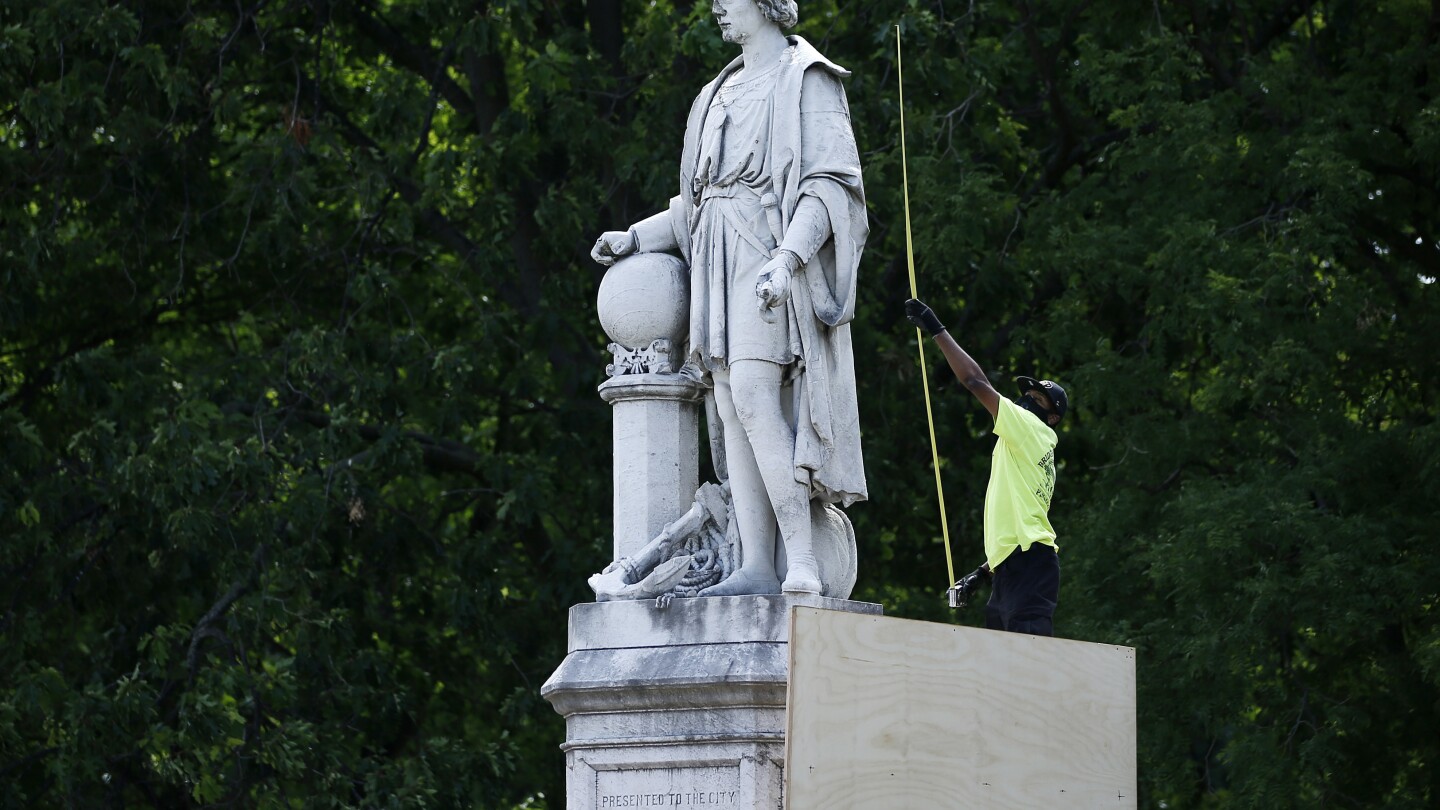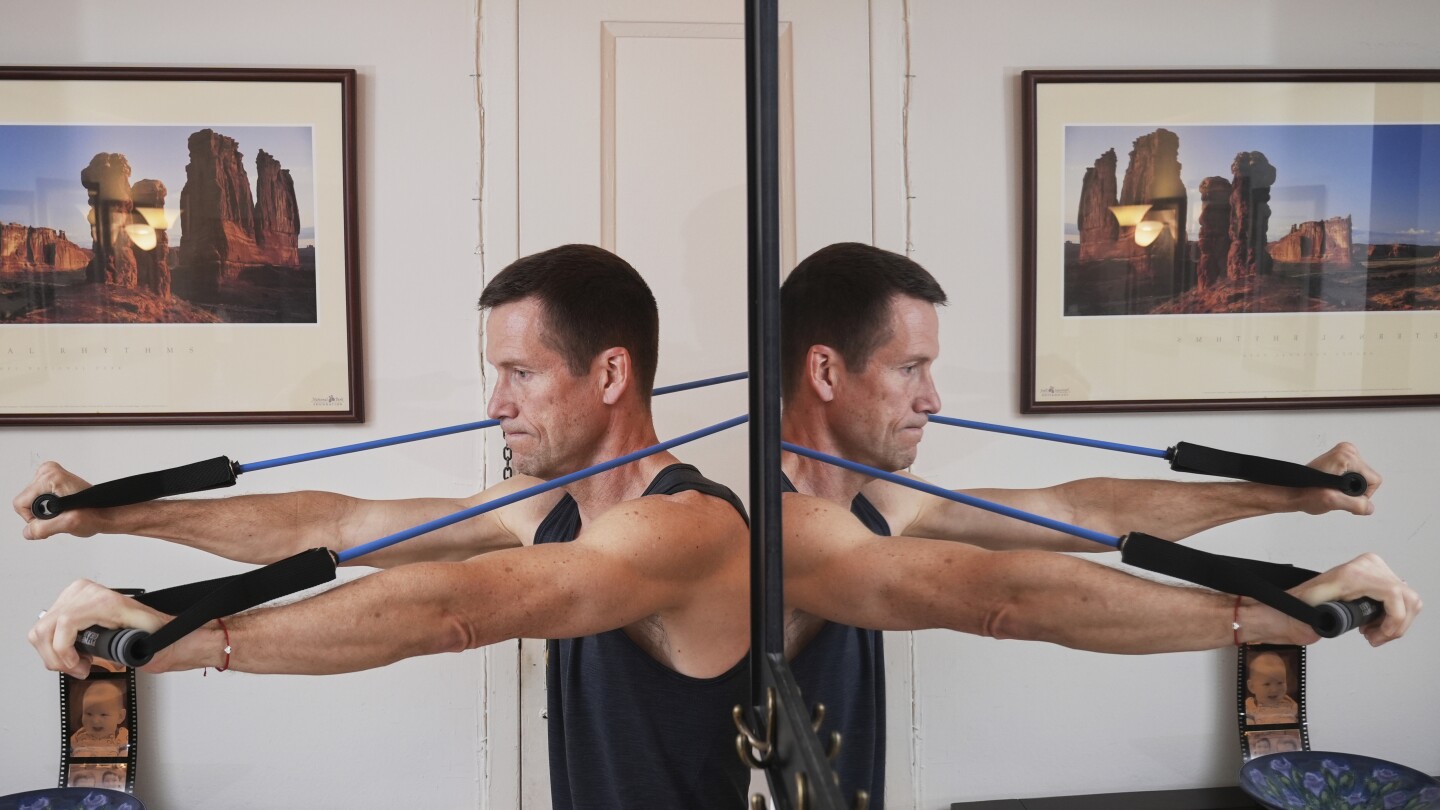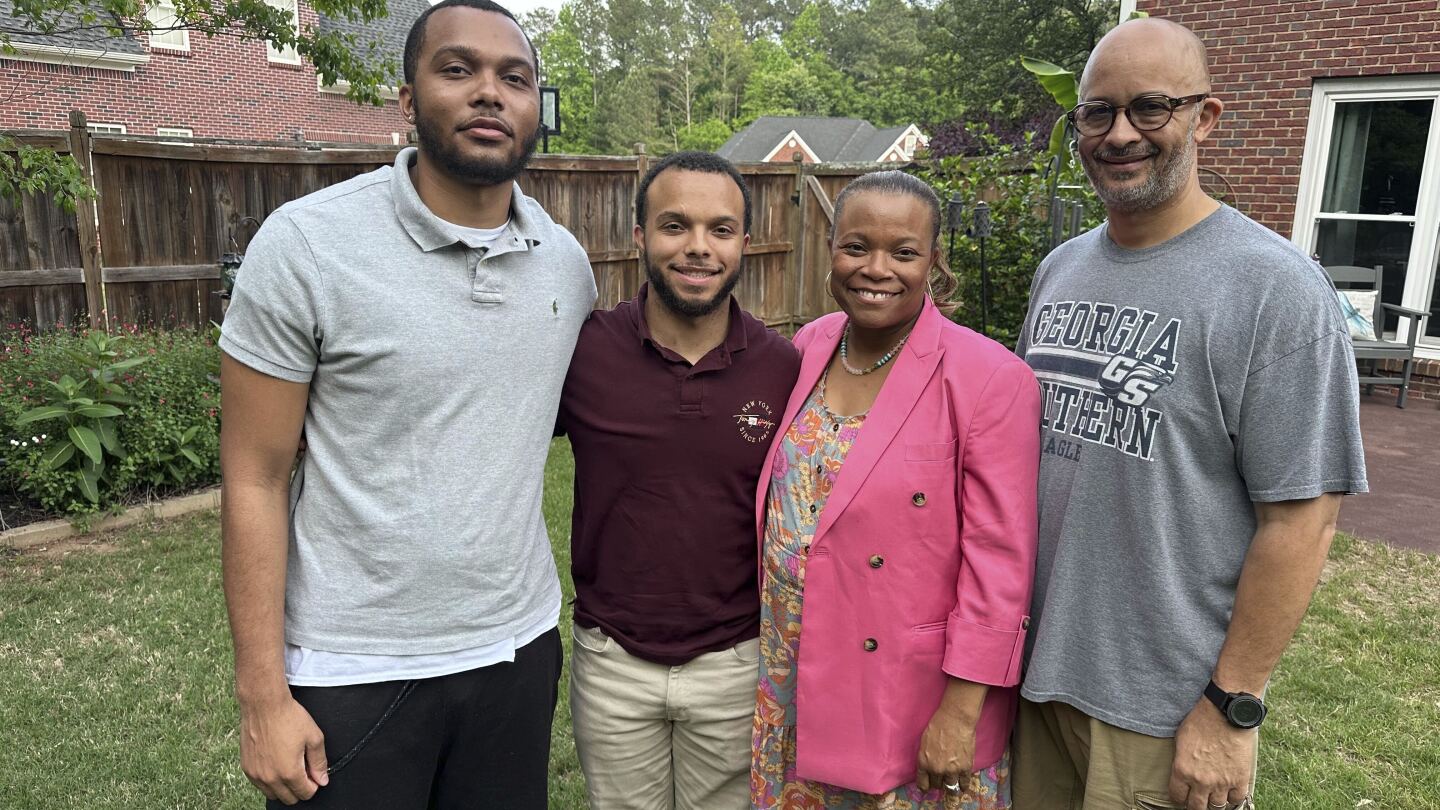Lifestyle
Indigenous activists see Trump’s Columbus Day rhetoric as cause for continued advocacy

This week, President Donald Trump announced he won’t recognize Indigenous Peoples Day and will bring Columbus Day “back from the ashes” — another sign some Native leaders say that advocacy for Indigenous representation must continue during Trump’s second term in the White House.
Columbus Day, celebrated annually in October, venerates the accomplishments of Italian explorer Christopher Columbus.
Native Americans have been lobbying local and federal governments for decades to replace celebrations of Columbus with a holiday that recognizes the contributions of Indigenous peoples. For many, the goal was to not only create a celebration of the beauty of Indigenous cultures and experiences but to also recast Columbus’ historical framing.
Instead of focusing on his navigation to the Americas, many Native people want to increase awareness of the role Columbus played in the mass atrocities and deaths inflicted upon Indigenous peoples.
Democrat Joe Biden was the first president to mark Indigenous Peoples Day, issuing a proclamation in 2021 that celebrated “the invaluable contributions and resilience of Indigenous peoples” and recognized the sovereignty and self-determination of tribal nations. The proclamation did not establish Indigenous Peoples Day as a federal holiday, nor did it remove Columbus Day as one.
Trump said he would not follow his predecessor’s practice of recognizing Indigenous Peoples Day alongside Columbus Day, accusing Democrats of denigrating the explorer’s legacy as he pressed his campaign to restore what he argues are traditional American icons.
However, Trump has previously acknowledged National Native American Heritage Month, which is celebrated in November. “As business owners, artists, teachers, writers, courageous members of our Armed Forces, and so much more, (Native American) contributions to our society are cause for celebration and appreciation by all Americans,” reads a 2020 heritage month proclamation issued by Trump.
In 2020, the Trump administration awarded $30,000 for the restoration of a Columbus statue in Baltimore torn down by protesters. That same year, during the presidential election, the administration released a policy vision for Indian Country entitled “Putting America’s First Peoples First — Forgotten No More!” in which the president pledged to “honor the storied legacy of American Indians and Alaska Natives.”
But on Sunday on his Truth Social site, Trump insinuated that Columbus’s legacy was another victim of wokeness. “The Democrats did everything possible to destroy Christopher Columbus, his reputation, and all of the Italians that love him so much,” Trump wrote.
Former president of the Navajo Nation, Jonathan Nez, was with Biden when he signed the Indigenous Peoples Day proclamation. He said it was an acknowledgment that generations of Native Americans fought and died for their right to be recognized as citizens of sovereign nations and the nation-to-nation relationship they have with the U.S.
“We have this special relationship with the federal government, but yet actions like this, it just takes us back in time, to a time where Indigenous peoples were not respected and were not seen as human beings,” Nez said.
Although the first official Indigenous Peoples Day celebration began in the 1990s, it didn’t gain widespread momentum until the last decade, with an uptick in state and local governments recognizing the holiday. At the same time, as a broad reckoning on racial injustice swept across the U.S., statues of Columbus have been ripped down by activists and protesters — part of a generations-long push to have more honest conversations about the history of the country and its founding.
Columbus Day first gained traction in the 1890s after the lynching of several Italian men in New Orleans. President Benjamin Harrison used it as a way to both quell anti-immigrant sentiments against Italians and to court their votes in the presidential election. Since then, Columbus Day has not only become tied to Italian American ethnicity but has also been a part of American nationalism identity, said Philip Deloria, a Harvard historian and member of the Dakota Nation.
“It’s pretty clear that Trump is seeing the ethnic strain — he said as much — but not really seeing the American nationalist strain,” Deloria said. “It’s a history he doesn’t want to hear. It seems like it might play into the kind of grievance politics he typifies. So it’s not at all surprising.”
During the Biden administration, the necessity for Indigenous Peoples Day was something that most Americans understood and respected, said Bryan Newland, former assistant secretary of the Department of the Interior under Biden and a citizen of the Bay Mills Indian Community (Ojibwe).
The work Native people have done to push the federal government to recognize Indigenous peoples’ dignity doesn’t end with an administration, Newland said. It’s generational work.
“As you go through four-year presidential terms and two-year election cycles it’s going to ebb and flow, but that toothpaste isn’t going back in the tube,” he said.
“Once you know the historical record of Columbus’ impact on Indigenous peoples, you can’t unlearn it,” said Montana state Sen. Shane Morigeau, a member of the Confederated Salish and Kootenai Tribes of the Flathead Nation who has a bill in the state legislature to recognize Indigenous Peoples Day alongside Columbus Day.
“It’s not like you’re trying to erase him from history. What you’re trying to do is teach through history, an accurate history, and not ignore it,” he said.
Lifestyle
Too busy to get fit? Here’s how to work exercise into your packed schedule

You’re too busy to exercise, right? Your job consumes all your time. You’re strapped by professional and family demands. As you get more and more responsibility, your free time shrinks.
Well, these blockers don’t have to be an excuse. Making time simply calls for creativity and a broader understanding of how to get in daily exercise.
“The trap is thinking that exercise must be an hour in the gym,” said Charles Scott, who describes himself as an executive mentor or exercise coach.
His message is simple: If you have a very demanding job, you need to find a work-life blend.
“An hour in the gym is exercise,” Scott told The Associated Press. “But it’s just one form of exercise.”
Scott coaches about 70 business executives — online and otherwise — and other busy people to improve their physical and professional well-being. He’s based in New York and is relatively hardcore about his own exercise but realizes not everyone can be — or wants to be.
He’s planning to run across the Grand Canyon in June — the out-and-back version — that covers about 46 miles (74 kilometers). He also has guided his blind friend Dan Berlin on several endurance events including a speed ascent up Mount Kilimanjaro and tandem cycling across the United States with a team of blind cyclists.
The ambitious person’s trap
Rather than terming it exercise, Scott talks about teaching “intentional movement” to his goal-driven clients.
“The ambitious person’s trap is when you undermine your physical and emotional health in pursuit of your professional goals,” he said. “It’s common in this culture among the executives I mentor.”
Scott asks busy people to focus on something other than making money or chasing fame inside the profession. He said he tries to emphasize a holistic approach that includes the emotional, the professional and the physical.
“Our bodies need to move,” he said. “No matter what age you are, our bodies must move to stay healthy. So if you’re not exercising, you’re out of alignment.”
Alternative exercise for busy people
Scott has a list of ways to blend movement into your day without needing a gym. Of course, if you can hit the gym, that’s great, too.
He suggests doing one-on-one meetings while you’re walking instead of sitting behind the office desk or laptop. Or, he suggests standing rather than sitting when you hold meetings.
“If you want a meeting to be short and efficient, choose the standing conference room,” he said.
Or do isometric exercises during a meeting to tone, for instance, your stomach muscles.
“Tighten up your stomach muscles. Hold for 20 seconds and don’t hold your breath,” he said. “Don’t make it obvious. Release. Do it again. You’ll be sore tomorrow. It burns calories. It tones muscles. And it takes precisely zero seconds out of your I-am-too-busy-to-exercise day.”
Ways to blend work and exercise
Here are a few more ideas about blending exercise into your work schedule.
If your flight is delayed, go for a walk around the airport and add to your daily step count.
Link workouts to daily events. For example, when you wake up, always go for a walk. Or, when you get home from work, do a certain number of pushups after you walk through the door.
Make a workout a social event and do it with a friend or a group.
Give yourself the title “athlete” and build habits around that identity. Scott is an advocate of experiencing “meaningful discomfort,” which he calls the “birthplace of resilience.”
Pay attention to the food you put in your body. Treat your body with respect.
Take a quick break from answering emails and do 10 squats or pushups or whatever to add movement.
“In business, many people show up to work and they crank it out all day,” which he termed a “rookie mistake,” like a newcomer going out too fast at the start of a marathon.
“Then they go home exhausted and they are fussy with the people they love.”
The partitioning approach
One of Scott’s clients is Harrison (Harry) Kahn, the general manager of the Vermont Creamery, an artisanal dairy.
Rather than blend, Kahn uses the partition method and awakens at 5 a.m. to get in his exercise, typically running, biking, or popping on skis in the winter in largely rural Vermont.
“I kind of get in the me stuff before the rest of the house wakes up,” he said.
He said his wife, Elisabeth, teaches French. She sets off early as they both combine to get their two children ready for school — 11-year-old Iris and 8-year-old Asher.
“Charles has reminded me that life isn’t a game of comparison with other people,” he said. “You have to figure out your own stuff.”
Kahn describes himself as a routine-oriented person who is comfortable dividing his day into chapters. Once he’s in the office, his attention is the job and 120 employees.
“I’m very focused when I’m at work, so I can get it all in as opposed to going in and out and having the day go on really long.”
Lifestyle
In coffee-producing Uganda, an emerging sisterhood wants more women involved

SIRONKO, Uganda (AP) — Meridah Nandudu envisioned a coffee sisterhood in Uganda, and the strategy for expanding it was simple: Pay a higher price per kilogram when a female grower took the beans to a collection point.
It worked. More and more men who typically made the deliveries allowed their wives to go instead.
Nandudu’s business group now includes more than 600 women, up from dozens in 2022. That’s about 75% of her Bayaaya Specialty Coffee’s pool of registered farmers in this mountainous area of eastern Uganda that produces prized arabica beans and sells to exporters.
“Women have been so discouraged by coffee in a way that, when you look at (the) coffee value chain, women do the donkey work,” Nandudu said. But when the coffee is ready for selling, men step in to claim the proceeds.
Her goal is to reverse that trend in a community where coffee production is not possible without women’s labor.
Uganda is one of Africa’s top two coffee producers, and the crop is its leading export. The east African country exported more than 6 million bags of coffee between September 2023 and August 2024, accounting for $1.3 billion in earnings, according to the Uganda Coffee Development Authority.
The earnings have been rising as production dwindles in Brazil, the world’s top coffee producer, which faces unfavorable drought conditions.
In Sironko district, where Nandudu grew up in a remote village near the Kenya border, coffee is the community’s lifeblood. As a girl, when she was not at school, she helped her mother and other women look after acres of coffee plants. They usually planted, weeded and toiled with the post-harvest routine that includes pulping, fermenting, washing and drying the coffee.
The harvest season was known to coincide with a surge in cases of domestic violence, she said. Couples fought over how much of the earnings that men brought home from sales — and how much they didn’t.
“When (men) go and sell, they are not accountable. Our mothers cannot ask, ‘We don’t have food at home. You sold coffee. Can you pay school fees for this child?’” she said.
Years later, Nandudu earned her degree in the social sciences from Uganda’s top public university in 2015, with her father funding her education from coffee earnings. She had the idea to launch a company that would prioritize the needs of coffee-producing women in the country’s conservative society.
She thought of her project as a kind of sisterhood and chose “bayaaya” — a translation in the Lumasaba language — for her company’s name.
It launched in 2018, operating like others that buy coffee directly from farmers and process it for export.
But Bayaaya is unique in Mbale, the largest city in eastern Uganda, for focusing on women and for initiatives such as a cooperative saving society that members can contribute to and borrow from.
For small-holder Ugandan farmers in remote areas, a small movement in the price of a kilogram of coffee is a major event. The decision to sell to one or another middleman often hinges on small price differences.
A decade ago, the price of coffee bought by a middleman from a Ugandan farmer was roughly 8,000 Uganda shillings, or just over $2 at today’s exchange rate. Now the price is roughly $5.
Nandudu adds an extra 200 shillings to the price of every kilogram she buys from a woman. It’s enough of an incentive that more women are joining. Another benefit is a small bonus payment during the off-season from February to August.
That motivates many local men “to trust their women to sell coffee,” Nandudu said. “When a woman sells coffee, she has a hand in it.”
Nandudu’s group has many collection points across eastern Uganda, and women trek to them at least twice a week. Men are not turned away.
Selling as a Bayaaya member has fostered teamwork as her family collectively decides how to spend coffee earnings, said Linet Gimono, who joined the group in 2022.
And with assured earnings, she’s able to afford the “small things” she often needs as a woman. “I can buy soap (and) I can buy sugar without pulling ropes with my husband over it,” she said.
Another member, Juliet Kwaga, said her mother never would have thought of collecting coffee earnings because her father was very much in charge.
Now, Kwaga’s husband, with a bit of encouragement, is comfortable sending her. “At the end of the day I go home with something to feed my family, to support my children,” she said.
In Sironko district, home to more than 200,000 people, coffee trees dot the hilly terrain. Much of the farming is on plots of one or two acres, although some families have larger tracts.
Many farmers don’t usually drink coffee, and some have never tasted it. Some women smiled in embarrassment when asked what it tasted like.
But things are slowly changing. Routine coffee drinkers are emerging among younger women in the coffee business in urban areas, including at a roasting place in Mbale where most employees are women.
Phoebe Nabutale, who helps oversee quality assurance for Darling Coffee, was raised in a family of coffee growers. She bent over the roaster, smelling the beans until she got the aroma she wanted.
Many of her girlfriends, she said, regularly ask how they can break into the coffee business, as roasters or otherwise.
For Nandudu, who aims to start exporting beans, that’s progress.
Now there are more women in “coffee as a business,” she said.
___
For more on Africa and development: https://apnews.com/hub/africa-pulse
The Associated Press receives financial support for global health and development coverage in Africa from the Gates Foundation. The AP is solely responsible for all content. Find AP’s standards for working with philanthropies, a list of supporters and funded coverage areas at AP.org.
Lifestyle
Accents are fading in parts of the US South, linguists say

Growing up in Atlanta in the 1940s and 1950s, Susan Levine’s visits to New York City relatives included being the star of an impromptu novelty show: Her cousin invited over friends and charged 25 cents a pop for them to listen to Levine’s Southern accent.
Even though they too grew up in Atlanta, Levine’s two sons, born more than a quarter century after her, never spoke with the accent that is perhaps the most famous regional dialect in the United States, with its elongated vowels and soft “r” sounds.
“My accent is nonexistent,” said Ira Levine, her oldest son. “People I work with, and even in school, people didn’t believe I was from Atlanta.”
The Southern accent, which has many variations, is fading in some areas of the South as people migrate to the region from other parts of the U.S. and around the world. A series of research papers published in December documented the diminishment of the regional accent among Black residents of the Atlanta area, white working-class people in the New Orleans area and people who grew up in Raleigh, North Carolina.
More than 5.8 million people have moved into the U.S. South so far in the 2020s, more than four times the combined total of the nation’s three other regions. Linguists don’t believe mass media has played a significant role in the language change, which tends to start in urban areas and radiate out to more rural places.
Late 20th century migration surge affects accents
The classical white Southern accent in the Atlanta area and other parts of the urban South peaked with baby boomers born between 1946 and 1964 and then dropped off with Gen Xers born between 1965 and 1980 and subsequent generations, in large part because of the tremendous in-migration of people in the second half of the 20th century.
It has been replaced among the youngest speakers in the 21st century with a dialect that was first noticed in California in the late 1980s, according to recent research from linguists at the University of Georgia, Georgia Tech and Brigham Young University. That dialect, which also was detected in Canada, has become a pan-regional accent as it has spread to other parts of the U.S., including Boston, New York and Michigan, contributing to the diminishment of their regional accents.
In Raleigh, North Carolina, the trigger point in the decline of the Southern accent was the opening in 1959 of the Research Triangle Park, a sprawling complex of research and technology firms that attracted tens of thousands of highly educated workers from outside the South. White residents born after 1979, a generation after the Research Triangle’s establishment, typically don’t talk with a Southern accent, linguist Sean Lundergan wrote in a paper published in December.
Often, outsiders wrongly associate a Southern accent with a lack of education, and some younger people may be trying to distance themselves from that stereotype.
“Young people today, especially the educated young people, they don’t want to sound too much like they are from a specific hometown,” said Georgia Tech linguist Lelia Glass, who co-wrote the Atlanta study. “They want to sound more kind of, nonlocal and geographically mobile.”
Accents change for younger people
The Southern dialect among Black people in Atlanta has dropped off in recent decades mainly because of an influx of African Americans from northern U.S. cities in what has been described as the “Reverse Great Migration.”
During the Great Migration, from roughly 1910 to 1970, African Americans from the South moved to cities in the North like New York, Detroit and Chicago. Their grandchildren and great-grandchildren have moved back South in large numbers to places like Atlanta during the late 20th and early 21st centuries and are more likely to be college-educated.
Researchers found Southern accents among African Americans dropped off with Gen Z, or those born between 1997 and 2012, according to a study published in December. The same researchers previously studied Southern accents among white people in Atlanta.
Michelle and Richard Beck, Gen Xers living in the Atlanta area, have Southern accents, but it’s missing in their two sons born in 1998 and 2001.
“I think they speak clearer than I do,” Richard Beck, a law enforcement officer, said of his sons. “They don’t sound as country as I do when it comes to the Southern drawl.”
New Orleans ‘yat’ accent diminished
Unlike other accents that have changed because of an influx of new residents, the distinctive, white working-class “yat” accent of New Orleans has declined as many locals left following the devastating Hurricane Katrina in 2005. The accent is distinct from other regional accents in the South and often described as sounding as much like Brooklynese as Southern.
The hurricane was a “catastrophic” language change event for New Orleans since it displaced around a quarter million residents in the first year after the storm and brought in tens of thousands of outsiders in the following decade.
The diminishment of the “yat” accent is most noticeable in millennials, who were adolescents when Katrina hit, since they were exposed to other ways of speaking during a key time for linguistic development, Virginia Tech sociolinguist Katie Carmichael said in a paper published in December.
Cheryl Wilson Lanier, a 64-year-old who grew up in Chalmette, Louisiana, one of the New Orleans suburbs where the accent was most prevalent, worries that part of the region’s uniqueness will be lost if the accent disappears.
“It’s kind of like we’re losing our distinct personality,” she said.
Southern identity changing
While it is diminishing in many urban areas, the Southern accent is unlikely to disappear completely because “accents are an incredibly straightforward way of showing other people something about ourselves,” said University of Georgia linguist Margaret Renwick, one of the authors of the Atlanta studies.
It may instead reflect a change in how younger speakers view Southern identity, with a regional accent not as closely associated with what is considered Southern as in previous generations, and linguistic boundaries less important than other factors, she said.
“So young people in the Atlanta area or Raleigh area have a different vision of what life is in the South,” Renwick said. “And it’s not the same as the one that their parents or grandparents grew up with.”
___
Follow Mike Schneider on the social platform Bluesky: @mikeysid.bsky.social.
-

 Conflict Zones2 days ago
Conflict Zones2 days agoRussia-Ukraine war: List of key events, day 1,170 | Russia-Ukraine war News
-

 Conflict Zones2 days ago
Conflict Zones2 days ago‘Missiles in skies’: Panic in Indian frontier cities as war clouds gather | India-Pakistan Tensions News
-

 Conflict Zones1 day ago
Conflict Zones1 day ago‘Slippery slope’: How will Pakistan strike India as tensions soar? | India-Pakistan Tensions News
-

 Middle East2 days ago
Middle East2 days agoUS foundation eyes takeover of Gaza aid | Israel-Palestine conflict News
-

 Africa1 day ago
Africa1 day agoMissing South African journalist and partner confirmed dead
-

 Africa2 days ago
Africa2 days agoSudan: Port Sudan hit by drone strikes for sixth consecutive day, UN sounds alarm
-

 Lifestyle1 day ago
Lifestyle1 day agoIndigenous fashion week in Santa Fe, New Mexico, explores heritage in silk and hides
-

 Middle East2 days ago
Middle East2 days agoUAE denies supplying Sudan paramilitaries with Chinese arms | Sudan war News




